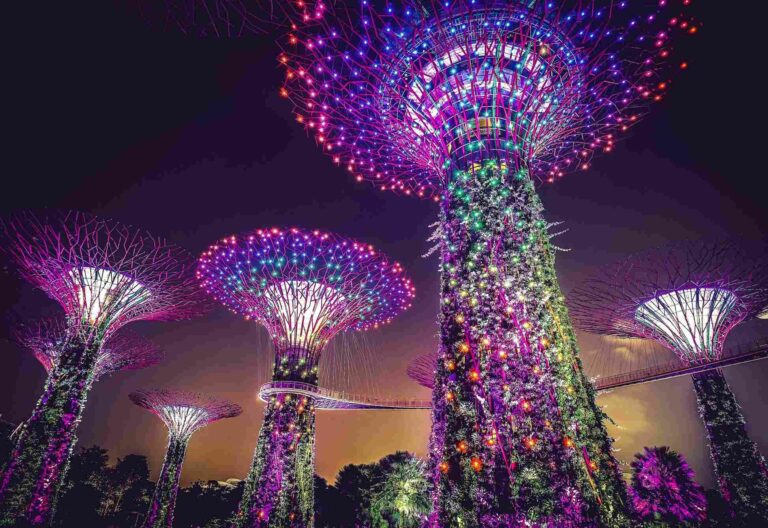The goal of the long-term strategy known as “Innovative Cities” is to help cities plan for future growth and development in a way that ensures their continued viability and effectiveness.
Many cities have become centers of innovation. This, as industries around the world transition to rely more heavily on technology and environmentally friendly practices.
Research facilities, municipal initiatives, venture capital availability, and a pool of talented residents are all components of an innovative city. Here’s a compiled list of some of the world’s most innovative cities worldwide.
Table of Contents
The 5 most innovative cities worldwide
The following are 5 of the most innovative cities today:
San Francisco
There are more startup companies in the San Francisco Bay Area than anywhere else. And, many of the world’s top universities are located there as well. San Francisco’s proximity to Silicon Valley, home to some of the world’s most influential technology companies, further cements the city’s reputation as a global hub for creativity and technological advancement.
For the same reason that it wants to keep its innovative companies in the Bay Area, the city also exempts biotech firms’ payroll from the city’s tax. In addition, San Francisco finances a placement program and web-and-code training. These help people enter and advance in the IT industry by providing them with the necessary skills and experience. The continuation of San Francisco’s innovative growth is guaranteed by this program.
London
London is consistently ranked as one of the world’s most innovative cities. This is because of its success in luring both multinational corporations and the best and brightest minds from around the globe. In 2021, London attracted 764 million dollars in investments into 114 professional and financial services projects, according to a report published by the City of London Corporation.
Approximately 2% of the world’s research institutions were found in London, according to the Global Research Identifier Database. In addition, there appears to be no letup in the city’s rate of innovation. About 1.5 billion euros in funding from seven funding bodies, including the Wellcome Trust, the Bill & Melinda Gates Foundation, and the Medical Research Council UK has been allocated to London’s biomedical sector for research beginning in 2021.
Another area of transportation innovation is likely to catch your eye when you visit London. In 2019, the Mayor of London implemented the Ultra Low Emission Zone (ULEZ) in the city’s core. Thus taxing drivers of polluting vehicles 12.50 euros per day. Its size grew in October of 2021. Furthermore, the mayor of London announced in March 2022 that the ULEZ would be extended citywide in 2023.
Singapore
Singapore, one of the world’s smallest countries and the only island-city state, has developed creative strategies to accommodate its large population in a relatively small area. The “Garden City” plan was first introduced to Singapore in 1967 with the intention of transforming the island nation into a verdant urban forest. After more than fifty years, this dream has finally come true.
Hanging gardens, green roofs, waterfalls, and even indoor forests, are just a few examples of the sustainable design features you will find in many Singaporean buildings. For instance, the Kampung Admiralty integrated public housing development is home to a total of fifty different animal species. And forty percent of the Oasia Hotel’s volume is devoted to open-air terraces.
In addition, nearly 40% of Singapore’s water supply is recycled from previously used water that has undergone purification or treatment. The city-state is also making concerted efforts to pour billions into its burgeoning community of startups, incubators, and VC firms. For instance, the government plans to put $19 billion into fields like sustainable urban development, digital economy and services, health and biomedical sciences. And, cutting-edge manufacturing and engineering as part of its Research, Innovation, and Enterprise 2020 Plan.
The city is so committed to innovation that it constructed an entire town for the study of autonomous vehicles and the collection of data related to them.
Amsterdam
Amsterdam has made an effort to be a pioneering smart city. Thus implementing measures like digital pay-to-park systems, real-time traffic monitoring, and streamlining trash collection since 2009. So that it can become Europe’s first zero-emission city by 2025, the city plans to outlaw the use of all gasoline and diesel vehicles.
By 2050, Amsterdam aspires to be a pioneering circular city. Thus, using circular economy principles to reduce waste and pollution, extend the lifespan of products and materials, and restore and revitalize natural environments. 50% of all building services and renovations should use circular building practices by 2025. To further foster the use of bio-based renewable materials, Amsterdam is even creating a new neighborhood constructed entirely out of wood. Beginning in 2025, construction will begin on the Mandela Buurt complex, which will add 700 new apartments.
Tokyo
Robotics and 3D printing have made Tokyo a global epicenter. Athletes were shuttled around in autonomous vehicles, recycled electronics were fashioned into medals, and robots delivering food and beverages to the crowds were just a few examples of the cutting-edge technology on display at the Tokyo 2020 Summer Olympics.
Sony, SoftBank, and Toyota are just a few of the many multinational corporations with their headquarters in Tokyo. In addition to being home to the largest urban agglomeration on the planet, the city also boasts one of the highest rates of labor productivity. And, the highest number of patents produced worldwide.
A successful innovative city
Innovation, invention, and the creation of things that benefit humanity come from people, not cities. But cities are still crucial to the creative process because they provide the conditions for new ideas to germinate, spread, and ultimately succeed.
Read also: Seoul is the first city to enter the Metaverse: all about the Seoul Vision 2030 plan












